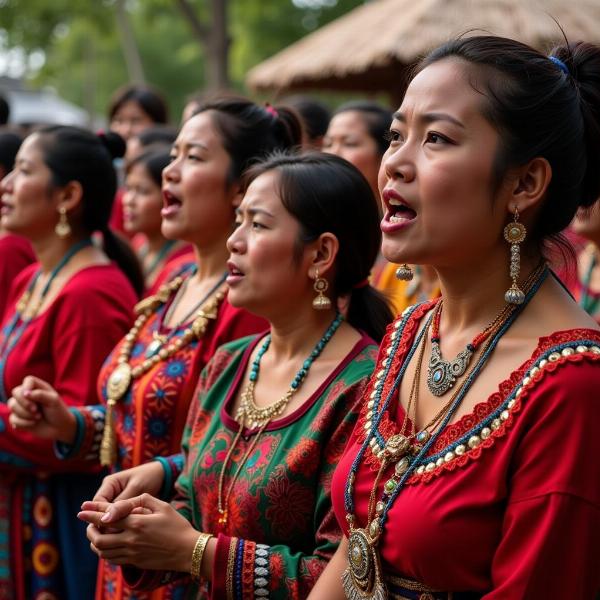Mayun meaning in Hindi revolves around the vibrant and joyous pre-wedding ceremony celebrated in various parts of India, particularly in North India and Pakistan. This ritual marks the beginning of the wedding festivities and is steeped in tradition and symbolism. It involves applying a paste made from turmeric, sandalwood, and other natural ingredients to the bride and groom’s skin. The mayun ceremony is not merely a cosmetic treatment but a significant cultural practice that embodies blessings, purification, and preparation for the upcoming marital journey. Understanding the mayun meaning in Hindi requires delving into its historical roots, regional variations, and the cultural beliefs associated with this beautiful tradition.
Exploring the Mayun Ritual: A Deep Dive into its Significance
The mayun ceremony is a vibrant celebration filled with music, dance, and delicious food. Family and friends gather to shower the bride and groom with blessings and well wishes. The turmeric paste, known as “ubtan,” is believed to have purifying and beautifying properties. It’s applied to the couple’s skin to enhance their complexion and give them a radiant glow for their wedding day. This practice also symbolizes the warding off of evil spirits and the bestowal of good fortune upon the couple. The mayun meaning in Hindi extends beyond the physical application of the ubtan; it signifies the transition from singlehood to married life.
Regional Variations and Customs of Mayun
While the core essence of the mayun remains consistent, regional variations add unique flavors to this celebration. In some regions, the ubtan is prepared with specific ingredients passed down through generations. In others, specific songs and dances are performed during the ceremony, reflecting the local culture and traditions. The duration of the mayun can also vary, with some families celebrating it for several days leading up to the wedding. These variations highlight the rich tapestry of Indian culture and the diverse ways in which this cherished tradition is observed.
Mayun and its Cultural Significance in Indian Weddings
The mayun ceremony is deeply intertwined with the cultural fabric of Indian weddings. It represents more than just a pre-wedding ritual; it’s a symbol of community, family bonds, and the passing down of traditions. The act of applying ubtan is often performed by elder female relatives, signifying their blessings and guidance for the couple’s future. The mayun meaning in Hindi also emphasizes the importance of purity and auspiciousness in preparing for a new chapter in life.
 Mayun's Cultural Significance
Mayun's Cultural Significance
What is the Significance of the Yellow Color in Mayun?
The vibrant yellow color of turmeric plays a central role in the mayun ceremony. Yellow is considered an auspicious color in Indian culture, symbolizing prosperity, happiness, and new beginnings. The application of turmeric paste is believed to bring good luck and blessings to the couple as they embark on their marital journey.
How is Mayun Celebrated in Modern Times?
While traditional practices remain at the heart of the mayun, modern celebrations often incorporate contemporary elements. From personalized decorations to themed parties, couples are finding creative ways to honor the tradition while adding their personal touch. The core meaning of mayun remains unchanged, but the celebrations have evolved to reflect the changing times.
Conclusion: Embracing the Rich Tradition of Mayun
The mayun meaning in Hindi encompasses a beautiful blend of tradition, symbolism, and celebration. This pre-wedding ritual signifies purification, blessings, and the joyous anticipation of a new life together. From the vibrant yellow of turmeric to the gathering of loved ones, the mayun ceremony holds a special place in Indian weddings, marking a significant transition and the beginning of a beautiful journey.
FAQs:
- What is the main purpose of the mayun ceremony? The mayun ceremony is a pre-wedding ritual aimed at purifying and blessing the bride and groom before their wedding.
- What is ubtan made of? Ubtan is a paste traditionally made from turmeric, sandalwood, and other natural ingredients.
- Who applies the ubtan during the mayun ceremony? Typically, elder female relatives apply the ubtan to the bride and groom.
- What does the yellow color symbolize in mayun? Yellow signifies prosperity, happiness, and new beginnings in Indian culture.
- Is mayun celebrated by both the bride and groom? Yes, in many regions, both the bride and groom participate in separate mayun ceremonies.
- How long does the mayun ceremony typically last? The duration can vary from a few hours to several days, depending on regional customs.
- Can modern elements be incorporated into a mayun celebration? Yes, many couples personalize their mayun celebrations while still honoring the traditional aspects.
Meaning-Hindi.in is your trusted partner for accurate and culturally sensitive translations. We offer a comprehensive range of translation services, from business and legal documents to website localization and academic papers. Our team of expert Hindi linguists ensures that your message is conveyed with precision and respect for the nuances of the language and culture. Contact us today for all your Hindi translation needs at [email protected] or +91 11-4502-7584. Meaning-Hindi.in is committed to providing high-quality translations that bridge linguistic and cultural gaps.